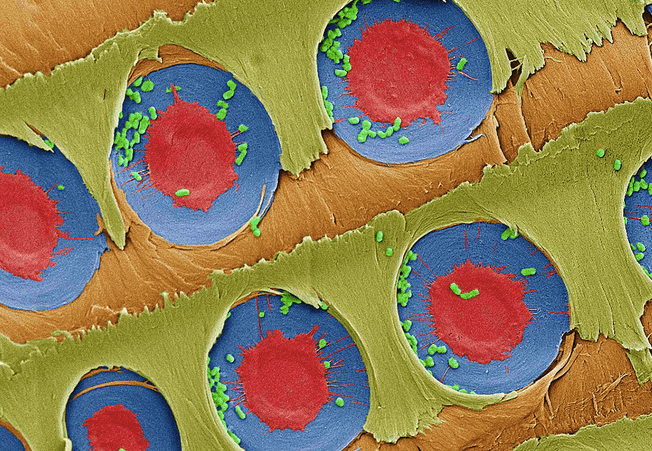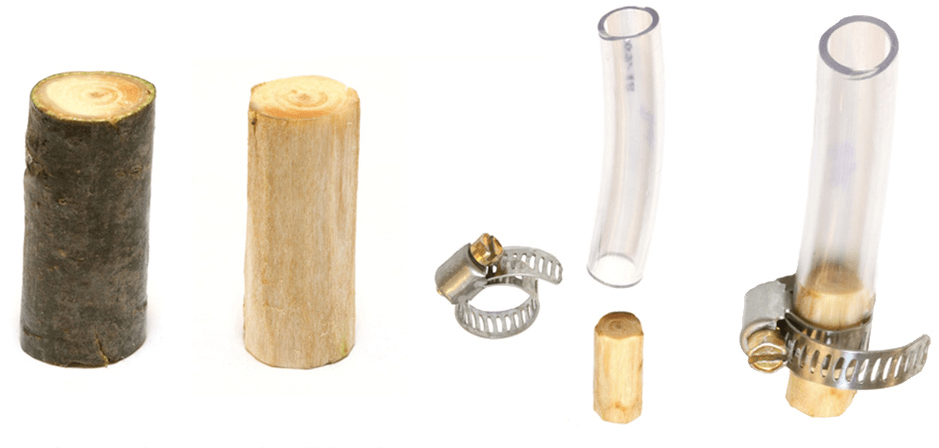Cheap Water Purification System Uses Sapwood, Filters 99% Bacteria - MIT Researchers
Making it possible for people in unprivileged areas with rural communities to have a cheap, low-tech water filtration solution, a team of researchers from MIT have developed a filtration system that uses a small bark of sapwood inserted in a plastic tube, to remove 99% of the bacteria E. coli from water. The system is capable of producing 4 litres of drinking water every day. The simplicity of the new technique relies on the size of the pores in sapwood. Every pore contains a xylem tissue evolved to transport sap up the length of a tree. By running water through these pores, this tissue blocks most types of bacteria. A research paper describing these findings has been submitted in PLOS One by Rohit Karnik, an associate professor of mechanical engineering, Michael Boutilier and Jongho Lee from MIT, Valerie Chambers from Fletcher-Maynard Academy in Cambridge, Mass., and Varsha Venkatesh from Jericho High School in Jericho, N.Y.

A false-color electron microscope image that shows the E. coli bacteria (green) trapped over xylem pit membranes (red and blue) in the sapwood after filtration.
The existing filtration systems involve the use of chlorine treatment which is expensive. Other low-cost methods like boiling of water requires the ever-depleting fuels, whereas the membrane-based filters require a pump and can become easily clogged. Therefore, Sapwood comes in the picture as a small-scale, cheap alternative. The researchers carried out experiments on the sapwood use, and figured out that there are certain limitations to the size of particles that can be filtered depending on the type of sapwood chosen. The filter probably cannot trap most viruses, which are much smaller in size than 200 nanometers.

Image: Simple filter uses peeled bark of white pine inserted in a plastic tube
Though the new Sapwood method is really useful in the parts of the world where people collect surface water, which can be polluted with particles of decaying plant and animal matter as well as fine dust. The group's design is very effective in filtering out most of the dangerous bacteria. The team is now working on evaluating the filtering potential of other types of sapwood. The great thing about the use of this naturally occurring material is that the thin slice of wood can be thrown away and replaced at almost no cost.
That's some good research work that the MIT team has come up with. What are some other cheap water filtration alternatives available today? Share with us in comments below.
Source: #-Link-Snipped-#

A false-color electron microscope image that shows the E. coli bacteria (green) trapped over xylem pit membranes (red and blue) in the sapwood after filtration.
The existing filtration systems involve the use of chlorine treatment which is expensive. Other low-cost methods like boiling of water requires the ever-depleting fuels, whereas the membrane-based filters require a pump and can become easily clogged. Therefore, Sapwood comes in the picture as a small-scale, cheap alternative. The researchers carried out experiments on the sapwood use, and figured out that there are certain limitations to the size of particles that can be filtered depending on the type of sapwood chosen. The filter probably cannot trap most viruses, which are much smaller in size than 200 nanometers.

Image: Simple filter uses peeled bark of white pine inserted in a plastic tube
Though the new Sapwood method is really useful in the parts of the world where people collect surface water, which can be polluted with particles of decaying plant and animal matter as well as fine dust. The group's design is very effective in filtering out most of the dangerous bacteria. The team is now working on evaluating the filtering potential of other types of sapwood. The great thing about the use of this naturally occurring material is that the thin slice of wood can be thrown away and replaced at almost no cost.
That's some good research work that the MIT team has come up with. What are some other cheap water filtration alternatives available today? Share with us in comments below.
Source: #-Link-Snipped-#
Replies
-
 Sarathkumar ChandrasekaranGreat share @#-Link-Snipped-#
Sarathkumar ChandrasekaranGreat share @#-Link-Snipped-#
Good to have some alternatives around us .
How mant times we can use it (reuseability)?
How often should we change the. sap wood filter? -
 Ankita KatdareI think wood can be replace every couple of days.
Ankita KatdareI think wood can be replace every couple of days. -
 Sarathkumar Chandrasekaran
Sarathkumar Chandrasekaran
Do you think it is safer for environment if everyone uses sap wood for purification.Ankita KatdareI think wood can be replace every couple of days.
Sorry i am just asking my doubt -
 Debasmita Banerjee
Debasmita Banerjee
I think this will not be comparable to the threat possessed by seldom tree falling incidents that take place for the sake of multi-storied. Besides sapwood is the outer most part of the branch(even if bark is considered) does not pose any threat to the tree. To collect sapwood one does not need to cut down a tree.SarathKumar ChandrasekaranDo you think it is safer for environment if everyone uses sap wood for purification.
Sorry i am just asking my doubt -
 Akhil C JoyHi All,
Akhil C JoyHi All,
Need of pure water is growing day by day. We can understand this from sales report of various bottled drinking water companies.
Once analysising this research, I would like to share the pros and cons of this method.
Pros.
Really Cheap
No great impact on environment
Cons
Less throughput (4 litres per day)
Cannot filter Virus.
Usually we do reverse osmosis to do the water purification. In this method Water is passed through a semi-permeable membrane which blocks all molecules, ions and bacteria.
Later we do the active carbon treatment to remove organic chemicals.
At last we do UV sterlization. In this method water is exposed to UV light in which all pathogens including microbes will be killed.
You are reading an archived discussion.
Related Posts
Japan and U.S. have declared the successful launch of a Global Precipitation Measurement (GPM) satellite on Feb 28, 2014. Aboard a H-2A Launch Vehicle No. 23, the rocket was successfully...
Remember '300'?
'300' Rise of an Empire - "Villains of 300" is back,
If you get a chance to see the movie please share your review... video looks impressive.
A lot of people are opting for online education. With websites like Coursera offering certificates for successful completion (by evaluating you on an online test) for a course on a...
hello mam, I am searching mega project topics ,but i am confuse with which technology related should i choose.Plz give some topics list i also prefered your given topic list...
Hai CEians,
i am having doubt in ARM Programming given below:
// SPI master initating function
//link: https://www.electroons.com/ARM/
void MASTER_INIT(unsigned int spi_number)
{
PINSEL0 = (PINSEL0 & ~(3 << 12))...
